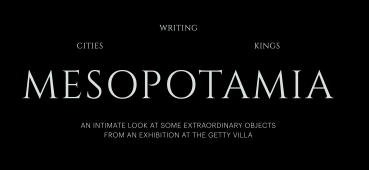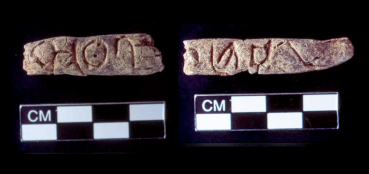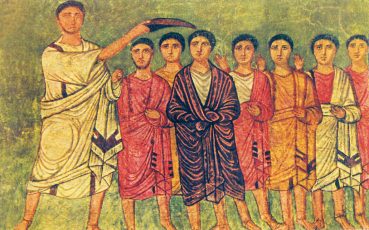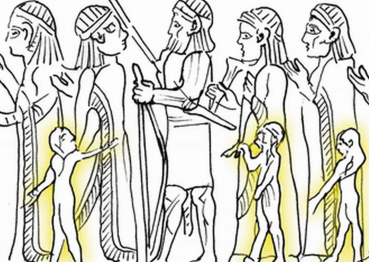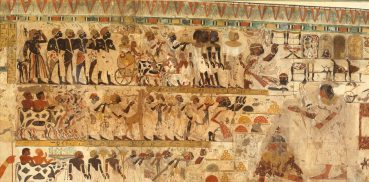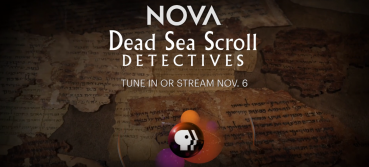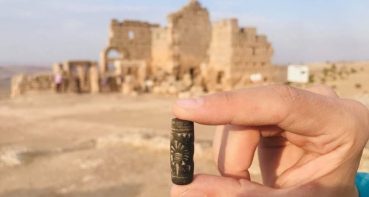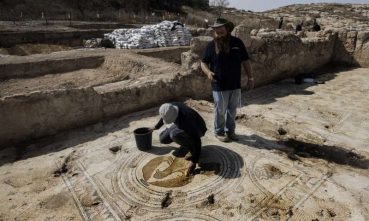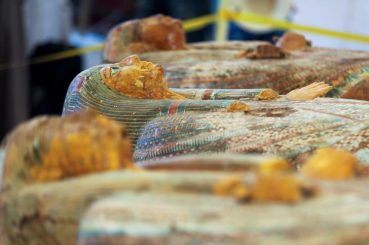This is a well-done, scrollable tour of the exhibition Mesopotamia: Civilization Begins from April 21–August 16, 2021 at the Getty Villa. A more standard page for viewing elements of the exhibit can be found here.
Category Archives: History
Earliest Alphabetic Writing
(Clay, finger-sized objects with engravings or inscriptions. Image credit: Courtesy of Dr. Glenn Schwartz)
Rachel Wallach writes in her online article, “Alphabetic writing may have begun 500 years earlier than believed: Inside one archaeologist’s mission to rewrite the history of writing“, that archeologist Glenn Schwartz believes discoveries at Umm el-Mara in modern Syria may mean that the history of alphabetic writing may need to be updated:
Continue readingWhat Did Jesus Look Like?
Joan Taylor has written a really good post over at ASOR’s Ancient Near East Today website discussing the issue what Jesus may have looked like. She first discusses the issue that most of our contemporary and iconic images of Jesus date from the Byzantine period or later, beginning some 300 years after Jesus and reflecting more the images and ideals of periods and cultures different from that of Jesus:
Continue readingMore Research on Children During the Biblical Period
Following up on the post I shared yesterday highlighting the article “Children in the ancient Middle East were valued and vulnerable — not unlike children today” by Shawn Flynn and Kristine Garroway, here is another article, this one in HaAretz, by Nir Hassan highlighting the work of Rona Avissar Lewis.
Continue readingChildren and Families in the Ancient Near East
Shawn Flynn, St. Joseph’s College, and Kristine Garroway, Hebrew Union College, have a nice article over at theconversation.com on children and families in the Ancient Near East. It provides some brief introductory insights. The article is entitled: “Children in the ancient Middle East were valued and vulnerable — not unlike children today“
Continue readingHeel bone from Italy only the second set of physical remains bearing the marks of crucifixion yet discovered
Though there is no doubt that crucifixion, well attested in literature, was a form of torture and execution in the Roman Empire (and other cultures); however, there is almost no evidence, in terms of physical human remains, of the practice. Forbes has an article (using information from an article in Archaeological and Anthropological Sciences) which highlights the discovery of only the second set of human remains bearing the marks of crucifixion. This discovery was made in Italy. Previously, the only other remains had been found outside of Jerusalem in 1968, in an ossuary bearing the name: Yehohanon ben Hagkol.
Continue readingDead Sea Scroll Detectives on NOVA
Tonight (Nov 6, 2019) NOVA will broadcast and stream “Dead Sea Scroll Detectives“.
Continue readingAssyrian Astronomical Tablets Contain Earliest Known Reference to Aurora Glow
From Live Science:
Continue readingThe descriptions, written in cuneiform, were found on three stone tablets, dating from 655 B.C. to 679 B.C. They predate other known historical references to auroras by about a century, researchers reported in a new study.
Unique 3000 Year-Old Assyrian Seal Found in Turkey
The Archaeology News Network and the DailySabah websites have info on the discovery. Here’s a snippet from the DailySabah website:
Continue readingIsrael Antiquities Authority showcases Beit Shemesh “Gloriorius Martyr” Church
The Israeli Antiquities Authority showcased information about the excavation of a sixth-century Byzantine church in Beit Shemesh with an exhibit at the Bible Lands Museum in Jerusalem. The excavations were directed by Benjamin
Here’s a snippet about the excavation of the church structure from the full article:
Continue readingEin Asawir (En Esur): 5000 year old city in the news
Several different news outlets (MSN, HaAretz, UPI, and others) are carrying the story from the Israeli Antiquities Authority press release about excavations at Ein Asawir (En Esur) of a large 5000 year old city in the north of modern day Israel (southeast of Haifa, in the Sharon plain). The 5000 year old city was also apparently built on another city/village which was inhabited 2000 years earlier, and this earlier city apparently included a temple structure. According to the reports, the location “spanned 160 acres and is estimated to have had 6,000 inhabitants.”

